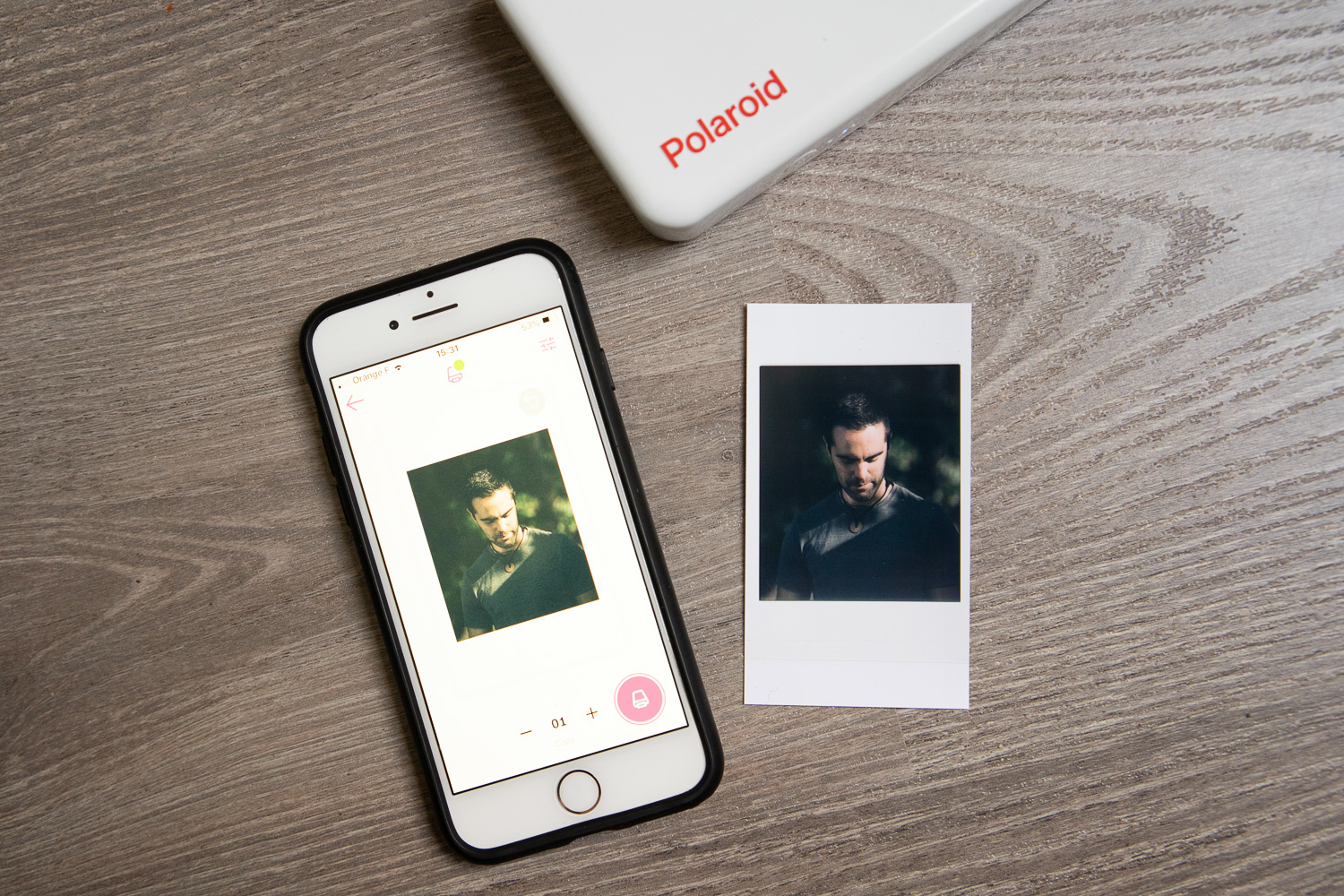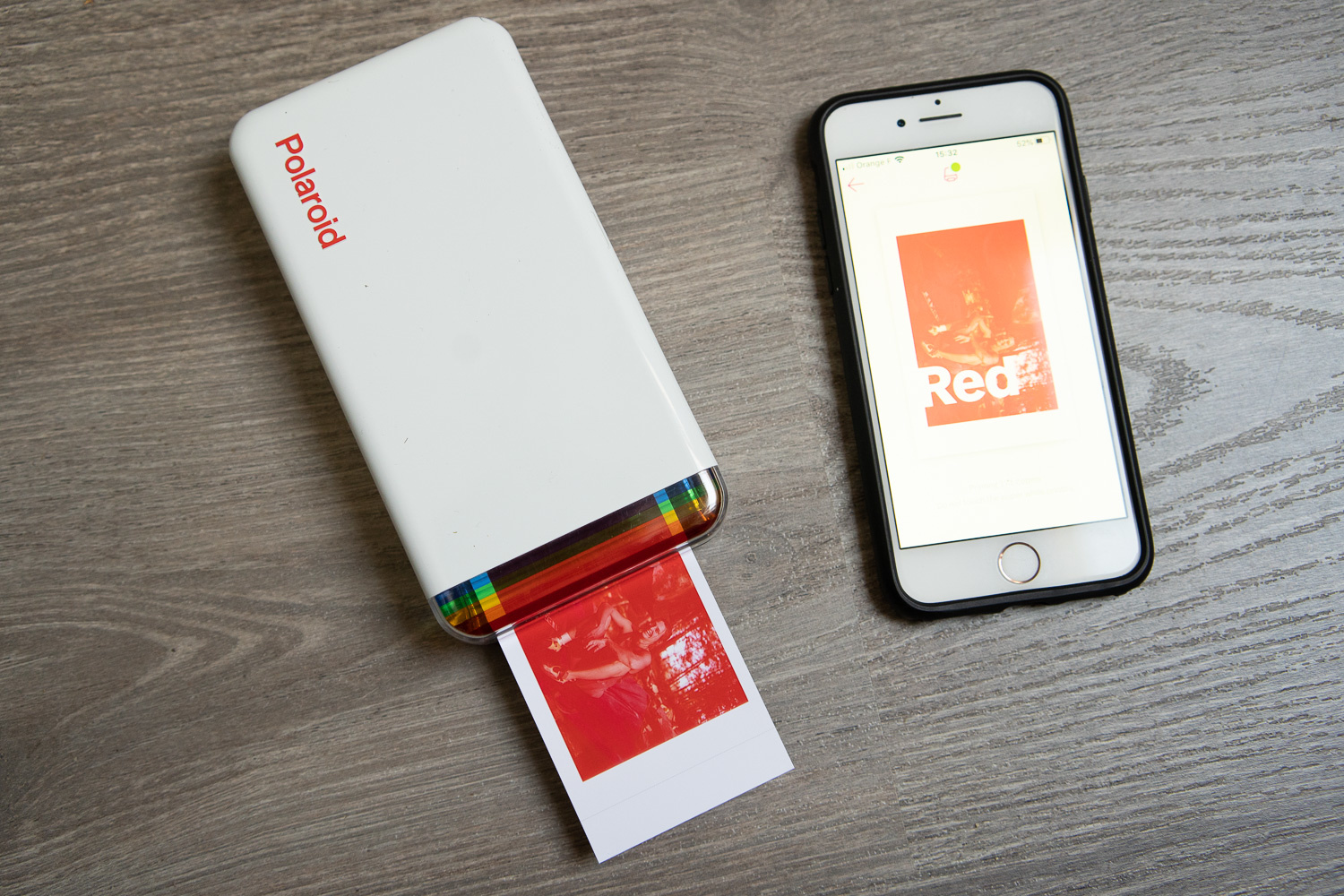Polaroid recently launched its “next generation portable printer” designed to work wirelessly with smartphones, producing prints that offer decent quality and won’t fade. How good is it, and does it merit $100 for the printer and up to $0.85 per print?
Intrigued and with something of a soft spot for the brand, I reached out to Polaroid, and they kindly loaned me a unit for a month.
Since its reincarnation, Polaroid has produced various portable printers designed specifically for smartphones, but this is the first from the company to use dye sublimation technology as opposed to ink. The ZINK technology used previously had a tendency to fade as well as producing mixed results, while this dye sublimation method promises longer-lasting prints that are much more durable. They can be handled immediately upon leaving the printer, and you can even get them wet without damaging the image.

Pushing the limitations with this print, slightly. Deep shadows and shades of dark grey don't do well, as you might expect from a printer of this size and price.
Wedging so much technology into such a small package is impressive. This battery-powered, USB-chargeable, Bluetooth-connecting printer isn’t quite pocket-sized, but it’s definitely close. And nor is it too heavy, weighing just under 10 oz (282 g) with a cartridge installed.
Connectivity is refreshingly easy. In an era when smartphone manufacturers insist on producing apps that feel like they’ve been designed by interns, Polaroid’s app is clean and easy to use. Installation (including a quick firmware update) is straightforward, and you can be ready to start printing within minutes.

Am I doing this right?
As well as printing, the app allows you to edit your photographs, tweaking brightness, saturation, and so on. In addition, you can add filters, graphics, text, and frames in a manner that’s very similar to Snapchat and Instagram Stories. It’s exactly the sort of thing that I assume teenage girls love creating so that they can then stick photos inside journals or onto laptops. I just turned 40, so I have no idea.
That’s another appealing feature: these are peel-able stickers. They emerge flat and seem durable, having a texture that’s very similar to C-type paper. Scratching aggressively with a wet fingernail will dent the paper but otherwise has no impact on the image.
As you wait for just over a minute for each print, Polaroid added a nice touch. Polaroid’s dye sublimation is a series of three layers (yellow, red, cyan) followed by a fourth protective layer that are all heat-transferred onto the paper. The paper slides in and out of the printer during the process, and the funky visualization on the app reflects each stage of the physical printing.

If there's one thing that Polaroid is good at, it's branding, and the app is reflection of the importance they place on good design
Color fidelity is mixed. Blues tend towards aqua (probably a good thing given the ongoing popularity of teal), and skin tones seem to have a bit more magenta than my iPhone suggests (though this is perhaps as much a reflection of my iPhone). Shadows get a bit muddy, and there’s visible banding if you squint at the prints from closer than a foot away.
As it’s a new product, testing the longevity of the prints has not been possible. My best effort was to stick a print onto the inside of a window in my roof for the best part of four weeks. September was an insanely sunny month here in France, and you can see that the colors have shifted slightly in that time, the greens leaning now towards yellow, the orange of the brickwork fading slightly, and the skies now slightly more violet rather than aqua.

The print labelled "3.9.20" spent a month stuck to the inside of the Velux window of my attic. September was an exceptionally sunny period here in France.
One of my few jobs this year (I say "jobs," I was volunteering for a non-profit) was documenting the Womens Bouldering Festival here in France. On the evening of the first day, I sat down at the socially-distanced social event, did some quick edits, and made some prints to hand out for free to some of the participants. I’d been planning to use up the two cartridges (i.e., 20 prints), but the battery died after only six prints. Polaroid claims that you can get 20 prints on one charge, but my next recharge produced only another six prints, and I only had a couple of prints remaining, making further tests impossible.
The cartridges themselves are one of the notable compromises when it comes to the shift from ink to dye sublimation. Ten sheets of paper, ribbon, and a caddy comes as one unit, and once those prints are used up, the entire cartridge needs to be thrown away. If you’re conscious of your plastic footprint, this does feel wasteful.
As a quick and easy option for events, it’s viable, though I’m not sure I could justify charging much money for each print, and you’d need to carry some extra electricity with you. The unit itself costs $99.99, and 20 prints will cost you $16.99, dropping to $14 each if you order in bulk. That means you can print images for as little as $0.70 a pop.
What I Liked
- App is excellent and fun to use
- Printing process is quick
- Prints are durable
- Image quality and longevity is superior to previous ZINK printers
- Stickers are fun and I can see this printer being very appealing to teenagers
What I Didn’t Like
- Battery life was poor (though testing was limited)
- Colors are close, but still not that accurate
Conclusion
This is a fun product, and as you can probably figure from Polaroid’s branding, this is designed with a younger generation in mind. The well-designed app lends itself perfectly to teenagers who are keen to plaster their walls and possessions with stickers, incorporating graphics and text that’s in keeping with social media. As a Christmas present for a teenager, the app alone might make it a solid choice over its competitors.
As an option for event photographers, it’s a compact, quick, and affordable option, despite the fact that it wasn’t designed with this in mind. You can get yours here.








Those throwaway plastic cartridges are awful, otherwise with a little more work, I'd imagine it's goodbye to postcards... but those cartridges.
What's the point of those prints if they are smaller than a typical smartphone screen?
Probably the novelty of easily making a physical print in an era where everything is digital. I can see it being a hit with street photographers who want to give their subjects a print or something.
Well, how do they compare e.g. to a portable Canon printer? That would be interesting.